Good day, my dear readers! Now the question on everyone’s mind is “what gift should I choose for my family members?”, but I have another question - to tell as clearly as possible how to properly dye your hair with henna, because my last visit to the hairdresser only strengthened me in the opinion that henna is extremely useful product. And not even because it cements marriages...
From this article you will learn:
How my friend almost married a Turk...
A year ago, one of my friends told the following story: a Turk was courting her, he kept trying to introduce her to his parents, but she didn’t care. I wanted to roll her up in a carpet and take her to Istanbul, but then I resorted to a trick. He brought a bag of powder and asked me to open it and pour it into my palm. The friend laughed and refused, the Turk lost his temper and didn’t bother me anymore. What was the matter?
It turns out that in some countries the bride, as a sign of fidelity to the groom, had to spend the night with henna clutched in her hand. In the morning, the dye would leave a stain on the palm, which meant a practically sealed marriage. The Turk hoped that henna would help him cement the alliance, you know?
And yet henna, or ground leaves of non-thorny lavsonia Russian women are better known as a product for dyeing hair at home, but has anyone thought about its harm?
To be or not to have henna on your hair?
I don’t know about you, but standing in front of the counter many years ago, I was rather captivated by the cheapness of henna. The last thing in the world I thought about was the effect and further use - I wanted to do it myself (it’s never too late for any “woman over 25” to do this) and do it with minimal damage to the family budget. It was then that I appreciated all its healing properties, the healing of split ends and the ability to create volume by thickening the hair.
Henna acts as a film for hair, evens out its scales, and resists aggressive environments such as salty sea water or hot sun. It even improves the water-fat balance, which can promote the growth of new hair and eliminate dandruff. This powder is also used to heal hair.
What effect do you want to get after using henna?
- Make your hair shine (half a cup of henna, a quarter of water, a raw egg. The mixture will be ready in 30 minutes)
- Overcome dry and brittle hair (as in the previous recipe, use 2 tablespoons of yogurt instead of eggs)
- Achieve aroma (add a quarter teaspoon of ginger, cinnamon, black pepper and nutmeg to henna and water)
- Strengthen hair (colorless henna is suitable for use)
Colorless henna was known back in the 16th century BC. It does not change hair color and has an antiseptic effect. There are rumors that the substance can even eliminate headaches and improve blood circulation.
There is another side to our product - a negative one, and I must warn you about it. It is better not to use it for coloring dry hair, because the composition contains tannins and some acids. Hair can quickly become dull, coarse and begin to fall out.
In addition, you should understand that while you are applying henna, it is better not to use chemical dyes - there is a risk of turning green or purple. And if the transition is inevitable, then you should first prepare your hair for it, for example, make 3-4 restorative masks with kefir. This same magic recipe will be useful to you if, before using henna, your hair was permed or highlighted, and now you decide to start using a natural dye.
But if you have weighed everything and decided to take a risk, then my advice to you: choose Iranian henna. In its palette, when mixed with other components, you will find many more shades than in Indian.
I dye my brown hair...
And now you have begun the coloring process itself. Pre-washed your hair, freeing it from excess oil. Wear gloves because henna can stain your hands and will be difficult to wash off. We treated the scalp, neck, and ears with a rich cream.
Start diluting the mixture. Do this in glass or plastic containers. Can I use ceramic? Can. The main thing is that it is not made of metal that can react with paint.
Add warm water to the powder, but not boiling water, and leave the mixture to “brew” for several hours. I know that at an ambient temperature of 25° it will take about four hours for the pigment to release. Then add oils or substances that contribute to the appearance of an acidic environment, for example, lemon juice, apple cider vinegar or kefir.
Start applying the composition to your hair. Usually the hair on the top or back of the head is dyed first, and the hair on the temples, behind the ears and at the forehead last, as it is usually thinner here. Leave 1-1.5 centimeters between partings.
Simple rules
- Apply henna to the roots, and then distribute the dye along the entire length of the hair using a comb.
- Wrap your head in a towel. Henna loves warmth (and so does your head!).
- You need to wash off the powder from your hair with plenty of water without adding detergents.
- Do not dry it with a hairdryer afterwards.
- You should not wash your hair for three days after coloring. The longer you don’t wash, the brighter and more saturated the color will be.
How long to keep our powder on your hair? It all depends on what you want to get as a result.
If you only want to improve your hair health with henna, then you only need to wait 15-10 minutes. If your desire is to acquire a red or red color, then leave it at 40. Are you a brunette? Then you can hold it for two hours. If you have blonde hair, then already in the third minute you can get a golden hue, and in the sixth - light red hair.
The color will appear stronger if you drink a cup of coffee while you wait for the effect - it will increase blood circulation in the scalp. 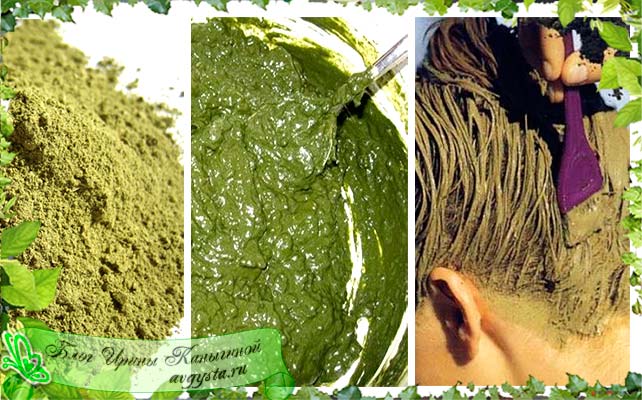
Which color should I choose?
The brightness of the color may depend on the expiration date of the henna. If the powder has gray-green color, then it is fresh if you have already purchased it brown tint, then it is most likely no longer suitable.
Thanks to the dye contained in henna, you can get any shade, from golden to blue-black. Everything will depend on the concentration and the addition of additional substances.
To get a copper color you will need 200 grams of rhubarb and a bottle of dry white wine. Place the mixture on the fire and “boil” until exactly half of it remains. Then add the contents of the henna packet and leave the finished mixture on your hair for half an hour. Instead of wine, of course, you can just take water. And to obtain darker golden shades, saffron (2 grams) or (2 tablespoons) is suitable.
Remember! Not a single henna you come across on the shelves is capable of lightening your hair. Do you have white henna in front of you? This means that they slip you a clarifier, and a very cheap one at that. You can lose your hair forever with it.
The cherry red color is achieved by adding beet juice. They say it can even turn out to have a purple tint.
The color of mahogany will appear when mixing henna with cocoa (3-4 tablespoons). And chestnut - with ground coffee (4 teaspoons per glass of water) and walnut shells (2 tablespoons).
A packet of henna with the addition of a tablespoon of hops will help you dye your hair chocolate color. In red with a copper tint - four sachets of the substance and two spoons of flower honey with a spoon of cloves.
If you want to add a red tint to your natural black color, it is better to first lighten your hair with hydrogen peroxide (30-40 g).
Henna and a million shades of gray
An equally popular natural dye is basma. You've probably heard that sometimes you dye your hair with henna and basma at the same time.
Basma is a green-gray powder obtained by grinding the lower leaves of indigo. The relevant literature suggests that even the Prophet Muhammad himself did not hesitate to use it!
The powder is taken in equal proportions with henna to dye it a chestnut color. If you want to get blue-black hair in the end, then you need to put twice as much basma in the dish. Bronze shades? - twice as much. 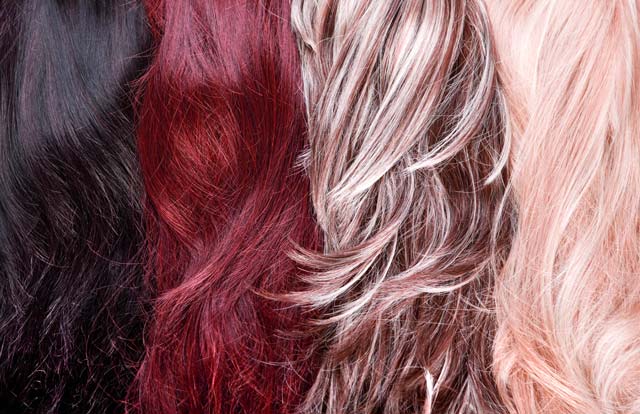
I want another one!
It happens that you don’t like the resulting color and then the question arises: “what to do?” When it comes to henna, everything is both simple and complex at the same time.
The reasons for getting the “wrong color” can be the strong porosity of the hair, its structure in general, as well as the natural color.
If in the first day after dyeing you realized that using henna is not for you, then there is no point in waiting for the third day, when the color becomes intense and deep, when it finally appears under the influence of oxygen. Wash your hair thoroughly with shampoo several times.
If the color seems beautiful to you, but you need to make it less bright, then you can neutralize it by rubbing heated vegetable oil into your hair. As soon as the procedure is completed, you start working with a hairdryer, then wash with shampoo. You repeat everything until your desires come true.
On the contrary, it seems to you that there is not enough juiciness, what then? Then you need to use essential oils, for example, tea tree, incense or eucalyptus. If you add a few drops of lavender, you will also protect your skin from irritation - it is considered hypoallergenic and suitable for use even by pregnant women and small children. There are also recipes with geranium or rosemary oil.
I like the color, but it wouldn’t hurt to remove the redness... you will be saved by: chamomile decoction or fragrant turmeric, ginger (which, however, can create a burning effect), lemon juice.
No redness, but I want more dark hair? Use strong tea or oak bark infusion. Try to achieve the desired shade with coffee or cocoa.
What's the end result?
As you understand, henna is not as harmless a remedy as it seems; you need to be careful with it. It can weigh down your hair and then you will only dream of its volume. But it can add an additional, coloring, zest to your beauty. female image. Try to change yourself, your appearance, while you are young at heart and feel strong!
That's all I have for today. I can only say that I myself am a big fan of Iranian henna and have been strengthening my hair with it for many years. I am often asked about various secrets of appearance, I say: - read my blog, with its help you will learn all my secrets. Share with your friends, subscribe to updates. See you in the next article!
If you want to change the usual color of your strands, you can go to a beauty salon or do the coloring yourself in the comfort of your own home. The new color makes the image fresh and unexpected, emphasizes the style of clothing, and temporarily lifts the mood when studying the reflection in the mirror. Henna is a natural dye with a harmless effect.
Is dyeing hair with henna beneficial?
Many women are sure that dyeing their hair is harmful. This opinion is wrong if you use a natural base in the paint. Chemical components harm the structure of the strands, disrupt the functionality of the follicles, and inhibit the growth of hair follicles. Among the beneficial properties, professionals highlight the following changes in the general appearance and condition of the hairstyle, due to the features of the natural formula:
- lawson is an active component of natural origin, which gives strands a red tint and covers gray hair;
- polysaccharides nourish and moisturize the scalp, stimulate the growth and health of follicles;
- essential oils successfully treat and prevent a number of dermatological skin diseases that are prone to chronicity;
- resinous substances remove free radicals, participate in the process of cell regeneration, and nourish the strands;
- organic acids normalize the activity of the sebaceous glands and ensure normal hair type;
- beta-carotene makes strands elastic and manageable;
- vitamins A, B, K and C have a beneficial effect on the structure of the strands, contributing to its health and strength.
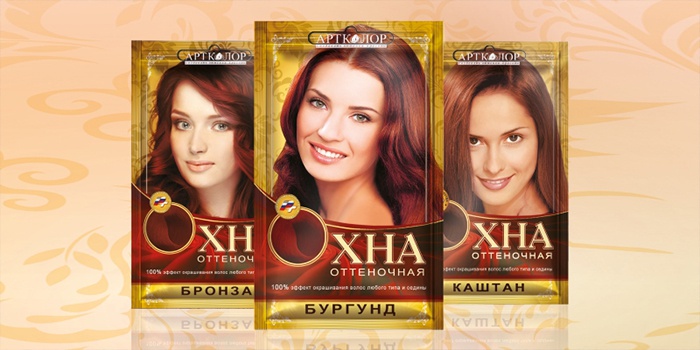
Advantages
Before you dye your hair with henna, you need to carefully study the instructions and become familiar with the advantages and disadvantages of this natural product. Since there are several possible shades, you need to familiarize yourself with the most appropriate option and determine the rules for coloring the strands. Among the advantages of such products, the following points should be highlighted:
- paint durability due to the presence of essential oils in natural composition;
- hypoallergenic effect on the scalp, i.e. there are no side effects of the procedure;
- the presence of natural coloring substances;
- rare head contamination;
- effective fight with dandruff and itching;
- strengthening brittle and split ends;
- prevention of all forms of alopecia;
- natural shine and rich shade of strands.
Flaws
Before you start the long-awaited henna hair coloring, you need to study everything in detail negative aspects such an idea. The result obtained, in any case, will not be colorless, so you need to carefully familiarize yourself with the purchased product and its characteristic features. Among the disadvantages of henna coloring, experts highlight the following points:
- short-term effect on hair;
- difficulty in choosing the required shade;
- difficulties in coloring gray hair;
- difficulty removing the shade;
- use the dye no more than once every 3 months;
- the use of chemical coloring methods only 3-4 months after applying henna to the hair.
Types of dye
Henna and basma continue to be actively used in hairdressing, since without harm to the hair you can not only lighten the strands, but also choose a more saturated shade for them: brown, chestnut, black. The final result depends on the choice of dye, its quality and the individual structure of the strands. Dyeing hair with henna is a whole art for a novice master. In order to use the composition without nerves, and not to be disappointed afterwards, it is important to know everything about the types of natural dyes.

This dye is necessary to lighten hair by several tones at once. The coloring process is possible at home, ideal for the first attempts to radically change a dull image. The presence of chemical additives in the composition allows you to dramatically transform your usual image and become blonde. The formula additionally contains ammonium persulfate and hydrogen peroxide, which makes the color rich and lasting for a long period of time. Experts say that white henna heals hair and effectively fights all forms of dandruff.
Iranian henna
This is a safe hair coloring product that additionally protects hair strands from the harmful effects of ultraviolet radiation and other pathogenic factors. environment. This powder paint provides a long-lasting cosmetic effect without disturbing the structure of the hair follicles. How long to keep henna on your hair depends entirely on the desired shade, and the time interval characterizes the procedure from 45 minutes to 2 hours. Iranian henna is colorless, but at the same time provides the desired shade of hair.
Indian henna
Another effective and reliable way to color your hair. The products are presented in powder form for further interaction with water. If you keep henna on your hair for the specified time, you can get a new color of the strands, while achieving the desired shine of the updated hairstyle. This natural dye is used to create designs on the body; the main thing is to prepare it correctly.

How to dye your hair with henna at home
- Before starting the procedure, it is recommended to trim the split ends, otherwise their shade will be slightly different from the general tone.
- The first step is to dilute the powder in hot water at a temperature of 80 degrees, prepare a mixture of liquid consistency and rich shade.
- After creating the coloring composition, you need to thoroughly wash your hair, lightly dry the strands, and comb your hair thoroughly.
- Prepare a special brush, gloves and sponge, after which you can proceed directly to the hair coloring process.
- Divide the hairstyle into separate strands, carefully color each one from the base to the very ends, starting from the back of the head.
- Treat your entire head thoroughly in this way, applying the composition evenly over the entire thickness of the strands.
- Tie dyed hair in high ponytail, put a scarf and a warm towel on top to create the so-called “greenhouse effect.”
- Do not remove the mask for 30-60 minutes, depending on the desired color of the strands and the saturation of the shade.
- It is recommended to rinse off the composition with water with the addition of vinegar (1 tablespoon per liter) until the water becomes clear.
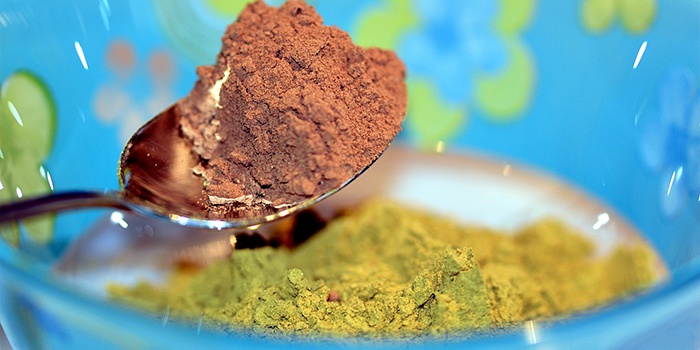
Natural hair dyes combined with henna
- To get a reddish tone, while maintaining the durability of the resulting color, henna can be combined with onion peels in one recipe.
- To obtain a desaturated color scheme, ginger will help, which significantly extinguishes visible redness.
- The presence of cocoa powder, coffee or strong tea in the recipe will allow you to get a darker chocolate hair color.
Coloring hair with henna in different shades
Recipe for lightening strands:
You will need:
- henna – 50 g;
- lemon concentrate – 2 tbsp.
- Combine the two ingredients in one container, stir until smooth.
- Distribute the mixture onto your hair and do not rinse for 30 minutes.
- Wash your hair using vinegar.
Recipe for darkening strands:
You will need:
- red wine – 50 g;
- cinnamon powder – 1 tsp;
- olive oil – 2 tbsp. l.;
- strong tea - 1 tbsp. l.
Method of preparation and instructions for use:
- Combine the composition in a glass container.
- Apply over the entire surface of the hair, wrap the head with polyethylene.
- Do not remove the mask for 20 minutes.
Who is not suitable for henna dyeing?
If your skin is hypersensitive, dyeing your hair with henna is highly undesirable. In addition, you should refrain from such experiments with your personal image in childhood. To check for an allergic reaction, you need to apply the composition to the back of your hand and wait a while. The appearance of red spots confirms the presence of an allergy and prohibits the use of henna.
Video: hair coloring at home
Periodic change of image for modern woman- natural desire. The easiest way to achieve this is by changing your hair color. There are many types of dyes for this, but not all of them leave the curls healthy after this procedure.
Positive and negative qualities
When using this product to color your strands, they will not only remain healthy, but will also improve their condition. However, it must be used correctly, otherwise you can get negative results from it.
Pros when used correctly

The photo shows how dyeing your hair with henna improves the condition of your hair.
Henna is a natural dye, so it is guaranteed to contain no harmful chemicals. On the contrary, it is saturated with useful substances, which, when dyed, have a healing effect on the structure of curls and the condition of the scalp.
After using it:
- the structure becomes rigid and elastic;
- the loss stops;
- the bulbs are strengthened;
- the rods are saturated with moisture;
- dandruff will disappear.
An important advantage of this product is that the resulting shade lasts a long time. It does not cause allergic reactions, so everyone, without exception, can apply makeup with it. Lawsonia powder dye covers each hair with a thin layer through which UV rays do not penetrate. The price of this natural product is quite affordable.
Negatives
Lawsonia powder can have a negative effect on the condition of hair if it is used incorrectly. Too frequent dyeing leads to severe dryness of them, as well as the scalp. As a result, the ends may begin to split.
Other negative properties of this product include:
- “patchy” dyeing in the presence of gray hair (such as henna hair dyeing in the photo above);
- It is impossible to dye dark hair with henna;
- Not everyone finds the pleasant smell during the procedure.
PLEASE NOTE! After painting with this powder, it is forbidden to do a perm.
Features of application and painting technology
Modern beauty salons do not use it, as well as other natural remedies for coloring curls. They focus on chemical pigment compounds. On the one hand, it’s much faster, it’s easier to choose the right shade, and the result is almost 100% predictable. On the other hand, the price of natural dyes is affordable for many, so you won’t charge much for such a procedure.
It is better to use henna and basma independently. They provide an opportunity to experiment with tones with your own hands and save a significant amount of money from the family budget. Besides, it’s so nice to realize that you are the creator of your own individuality.
Secrets of effective coloring
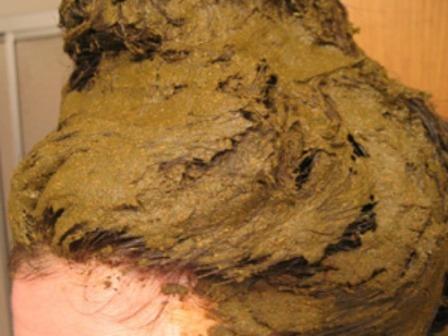
Hair dyeing with henna will be of high quality if this product is applied generously.
Don't know how to dye your hair with henna at home? This matter has its own nuances:
- You should never use conditioner when washing your hair before coloring. This will reduce all efforts to zero.
- The quantity and composition of the finished paint depends on the length of the strands. To achieve best result they need to be “bathed” in it. That is, being “greedy” is not recommended.
- You should not paint with this product if highlighting has been done previously.
For hair different lengths An individual amount of lavsonia powder is required: 50-100 g – for short ones; 200 g – length to the base of the neck; 300 g – to the shoulders; 400 g – to the waist.
NOTE! To avoid using scales, you can use a glass/tablespoon. A two-hundred-gram glass contains 100 g of lavsonia powder, and a tablespoon contains 7 g.
What you need for painting
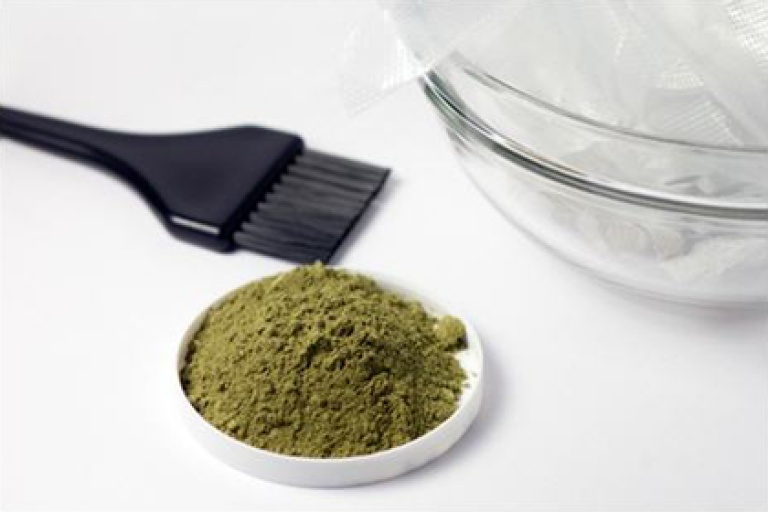
To dye your hair with henna you will need to prepare gloves, glassware and a brush.
Before painting, you need to prepare everything so that you don’t have to look for something. The process will require:
- hairpins that will secure the dyed strands;
- a sheet to protect yourself from paint;
- plastic bag or shower cap;
- brush, comb;
- cup/bowl (exclusively glass or ceramic);
- unnecessary towel;
- brush;
- disposable gloves;
- wooden spoon for mixing the coloring composition.
Step-by-step technology of the painting process
All things on the list should be near you. This way everything will go according to plan, no unforeseen situations will arise.
The instructions for painting with your own hands are as follows:
- The mixture is being prepared. The calculation is made based on the length of the curls.
- Curls are combed thoroughly. First with a regular brush, then with a wide-toothed comb, and then with a fine-toothed comb. The head is divided into partings.
- The ears and the border near the hair growth are lubricated with cream.
- Disposable gloves are worn.
- Take a brush and use it to begin the painting process. You need to start from the top of the head and move towards the forehead.
- After working through all the areas on the head, the curls are carefully painted along the entire length. To do this, scoop up the mixture with a gloved hand, distribute it evenly over the strands, then make movements as if washing. All actions must be as careful as possible.
- The hair is placed on the top of the head, packed in a shower cap/plastic bag and covered with a towel on top.
- You can go about your business. After the required time has passed, the “compress” is unwrapped and the paint is thoroughly washed off. The procedure is carried out until the water becomes clear.
ATTENTION! Dyeing dark hair with henna follows similar instructions. Don't expect your hair to turn a rich red color after this. This dye is almost powerless on this color, but it can deepen the natural shade, giving the curls power and shine.
Dilution and proportions depending on obtaining the desired color

The photo shows the possible shades that can be obtained using only henna, depending on the base color and structure.
The color obtained during the dyeing process with lavsonia powder can be completely different. It depends on the quality of the dye and the characteristics of the hair structure. Each person is individual, so they react differently to the dye.
And the time required to fix the same shade will vary for each person. To get dark colors, including chocolate or rich chestnut, you need to mix henna plus basma in a certain proportion.
Basma is another natural substance used in the beauty industry. This herbal powder is greyish-green in color. Basma is obtained from the leaves of the indigo plant and is used for dyeing dark colors. Combined hair dyeing with henna and basma makes it possible to experiment interestingly with your hair.

Table of proportions and exposure time when dyeing different shades of hair with henna and basma to obtain a specific color.
THIS IS USEFUL TO KNOW! Pure basma is not used for hair coloring. This is especially true for people with pronounced gray hair. Suffice it to recall the character of Sergei Filippov from the Soviet film “12 Chairs,” who received greenish-bluish hair after similar experiments. It is very difficult to wash away such a “result”.
How to dye your hair with henna and basma to get interesting shades? Everything is quite simple, you just need to follow the recommendations below.
"Rich chestnut"
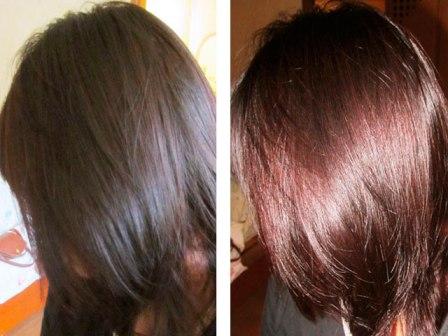
The photo shows the result of dyeing hair (rich chestnut) with henna and basma in the proportions given below.
Don't know how to dye your hair brown with henna? It's pretty simple. You just need to add brewed coffee and basma to the powder from lavsonia leaves.
This paint is prepared as follows in the following proportions:
- A pack of henna (about 152 g) is mixed with 2 packs of basma (125 g). To get the desired color, the mixture is poured with strong coffee and allowed to brew for about 2.5 hours.
- Add honey (a couple of tablespoons) and 5 capsules of vitamin E. This will nourish and moisturize the skin and bulbs.
- Mix everything with a wooden spoon.
- Paint using the technology described above is used for its intended purpose.
"Bitter chocolate"

Hair color is dark chocolate, created using henna, basma and coffee.
You can dye your hair chocolate color with henna by adding basma to it. Subtleties of preparing this composition:
- Take 2 components equally and then mix. In this case, you need to calculate how much powder is needed, taking into account the length of the strands.
- Add ground coffee (4 tablespoons) to the mixture.
- Pour white wine over the resulting mixture to ensure that the mixture is not too thick or runny.
- Place in a water bath.
- Allow the mixture to heat up and begin painting immediately.
- You need to keep this composition on your hair for about 2.5 hours.
Purple

In order to achieve this effect, you will need to dilute lavsonia powder in red beet juice. You can replace it with elderberry juice or freshly brewed hibiscus tea.
Dark tone
To obtain an almost black color, henna and basma are mixed in a ratio of 1 to 2, poured with water and rubbed thoroughly. Make a very thick mixture. To get a deep black color, you will have to sit in a plastic bag with a towel on your head for at least 3 hours.
PLEASE NOTE! It may not be possible to get an almost black color instantly. The final result will be known only in a day, or even two.
Rules for dyeing gray hair

Henna and basma go well with each other and together cover gray hair well.
The older a person gets, the more his hair loses coloring pigment. After quite a long time it becomes completely discolored. For some, this moment is not important at all.
However, many women are very worried about the appearance of white hairs, but do not want to use unnatural dyes. A very pressing question for them is: how to dye gray hair with henna so that it remains healthy?
It should be noted that this natural dye is incompatible with gray hair, since during the dyeing process all white hairs will turn carrot- or orange-red. An alternative is to add other substances to the powder.
These could be:
- Basma;
- infusion of chamomile;
- walnut infusion;
- natural coffee (ground);
- borage juice;
- saffron powder;
- and others.

Henna without impurities on gray hair can color it unevenly, as in the photo.
Some subtleties when dyeing gray hair with henna with various natural additives are as follows:
- Test the finished dye on a separate strand. Note how many minutes it took to complete the painting. Spend exactly the same amount of time for the very first procedure.
- After a few days, repeat the staining. Leave the paint on for about 2 hours.
- Coffee, chamomile or walnut infusion are suitable as additives to this powder. They will give noble shades, eliminating the formation of bright red tones.
Ways to get rid of henna
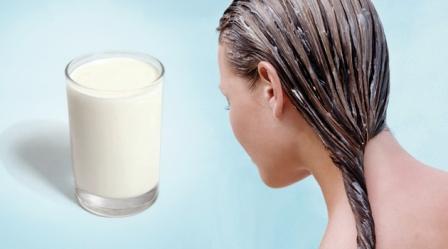
A kefir-yeast mask will help gradually remove henna from your hair.
If you want variety, and your hair is dyed with lavsonia powder, you will have to resort to various tricks. After all, this dye lasts a long time on the hair. What to do? You can just wait. During this time, the strands will grow back. True, it will take at least six months to a year if the hair is shoulder-length or longer.
You can make some sacrifices by using an aggressive “flushing” method - a mask with alcohol. For this you will need:
- Find alcohol 70%.
- Soak a sponge in alcohol and rub your hair with it.
- Do nothing for 7 minutes.
- Apply any oil over the alcohol (olive oil is ideal).
- Wrap your head in cling film or put on a bag/shower cap, and roll up a turban from a towel.
- Leave this “compress” for 40 minutes.
- Use mild shampoo to wash off.
- Repeat all steps again after a couple of days.
There are easier ways to get rid of henna. They are not so aggressive, however, they need to be carried out large number times to completely “wash” the boring color. For such purposes, an oil or kefir-yeast mask, rinsing with vinegar, and washing your hair with laundry soap are suitable.
Is it possible to dye your hair after henna and what is the best way to do it? This is not a separate short topic, so if you are interested in such information, you can find out about it by following the link.
Finally
As it became clear, it’s not difficult to paint yourself with henna. But if you have any questions, you can see everything clearly in the video. Do you have experience in this matter? Or do you know any exclusive coloring options using natural lawsonia powder? Write about them in the comments.
Hair coloring with henna
Henna coloring! Yes, I can probably defend a dissertation on this topic :) I’ve read so many things and tried so many different recipes with henna.
One way or another, I have been using henna for a year now and I can definitely say that my hair has acquired volume and shine that cannot be achieved with any dye. In addition, henna enhances hair growth, makes it shiny, but slightly dries it out. Therefore, henna coloring is an ideal solution for hair prone to oiliness. Henna shades that can be achieved at home range from reddish to dark chestnut.
No matter how much opponents of henna hair coloring talk about the dangers of using it. In response, I will say that the effect of chemical dyes on hair is much worse. Indeed, henna dries out the hair a little, but it really depends on the hair. To avoid this, you need to use henna not often, but, for example, once a month and add additional ingredients (oil, egg, kefir, etc.), then there will be no dryness. But, if a woman is used to changing her hair color like a glove, henna is not for her, since henna is difficult to wash off from hair. There is an opinion that you cannot paint with henna after painting with regular paint and vice versa. But my friends and I wore makeup back and forth many times, did highlights, and no one turned green :), Maybe, of course, it’s a lottery. But I think the only ones who should be careful are blondes. Hair may turn carrot red.
Instructions for using henna, maybe someone will find it useful :)
1. Wash your hair with shampoo, do not use conditioner.
2. While the hair is drying a little, prepare henna: pour henna into a bowl (not metal) (Iranian - gives a reddish tint, Indian - reddish), pour in very hot water (t-90c). Then add 1 tablespoon olive oil. Mix all the lumps, the mass should be like thick sour cream.
3. Add honey, yolk, a couple of spoons of cognac (underline as necessary) and mix quickly. The mask should not cool down.
5. We put on a plastic cap, wipe up the stains (I usually put an old towel or toilet paper) and go about our business.
6. After an hour (or more), rinse everything off with warm water, without shampoo.
7. Admire the result.
In general, when dyeing with henna, there are a lot of nuances, a lot depends on the original hair color and structure, you need to experiment.
As a rule, it is difficult to achieve the first time desired color, so if you don’t like the color, you can weaken the color or remove henna using masks with olive oil. Buy olive oil, apply to dirty, dry hair, leave for 20-30 minutes and rinse with shampoo. Repeat the procedure until the result is achieved.
Hair dyeing with henna. Henna for hair. Folk remedies hair care
Warning: wear gloves on your hands - warm henna stains your palms and nails a carrot color. Cognac is added to the mask to make the mixture with the addition of olive oil better 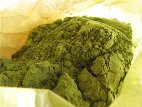 A few more ready-made henna dye recipes.
A few more ready-made henna dye recipes.
1. Recipe for dyeing henna with kefir
I read this recipe on the Internet a long time ago and liked it. Henna gives off its coloring properties not only in boiling water, but also in an acidic environment. Therefore, henna can be mixed with any fermented milk product. The more sour the better. It’s better if the kefir is expired, preferably 1%, so that the hair is not greasy. The day before painting, remove the kefir from the refrigerator so that it sours further. There is no need to heat kefir, otherwise it will curdle, but it should be at room temperature for comfortable dyeing. When applying henna, the hair should be slightly damp so that the dye penetrates better. Apply paint quickly. After applying the paint, you can walk around with your head uncovered, then the color will be dark, brownish, but if you put on a cap, that is, deprive the henna of air, then it will have that red tint. The maximum exposure time for henna pigment to hair is 6 hours. I hope that you can wash off the henna immediately with shampoo. Well, there’s nothing to say about the benefits of kefir for hair.
2. Henna coloring with lemon juice.
Henna is poured with lemon juice until it becomes a paste and left for 10-12 hours. Then warm kefir and yolk are added. This mixture is easy to apply to hair. Lasts for 1-2 hours, then washes off.
Hair dyeing with henna. Henna for hair. Folk hair care products
3. Regular henna coloring.
Before the henna dyeing procedure, add 2 egg yolks to the powder, you can add 1 tsp. honey - such a coloring mask has therapeutic effect. Apply henna to clean, dry hair (the color is more intense). The longer you keep the mask on your hair, the richer the color will be. After coloring, rinse your hair with water and apple cider vinegar or lemon juice. Hair becomes soft and shiny.
The shades that can be achieved with henna are very diverse.
1. Purple tone, burgundy can be obtained if henna is diluted not in water but in beet juice; the same effect comes from elderberries or hibiscus tea. Beetroot juice. Heat to 60 degrees, add a bag of henna. To enhance the red tint on your hair - boil madder root (2 tablespoons) in a glass of water, add henna.
2. If you want “MAHOGANY”, fill it with hot Cahors. The “mahogany” color can also be obtained if cranberry juice is added to henna, and before dyeing, moisten the hair generously with it and dry it.
3. Chocolate and black colors can be obtained by adding black coffee to henna. When adding natural ground coffee to the mixture (1 teaspoon per 25 grams of powder), we get a CHESTNUT TONE.
4. If we add cocoa powder, we get the shade PALE CHESTNUT. Henna is combined with 3-4 tbsp. spoons of cocoa. Brew the mixture with hot water until it cools down, quickly apply the mixture to clean and dry hair.
5. Rhubarb, saffron, chamomile or turmeric give a golden-honey hue. If you want to get a GOLDEN-RED TONE, pour henna not with hot water, but with a decoction of chamomile (1-2 tablespoons per glass, leave, strain, heat to 90 degrees). Turmeric is simply added to the composition with henna. Rhubarb - 200 g of dried plant stems, combined with a bottle of dry white wine (you can do without wine) and boil until half of the liquid has boiled away. A packet of henna is added to the remaining composition. The composition is applied to the hair and left for about half an hour.
6. The color of old gold - saffron on the tip of a knife is boiled in a small amount of water for two minutes, then added to henna.
7. Copper color - take 200 g. onion peels, 2-3 tablespoons of black tea, pour 0.5 l. white grape wine and place on low heat for 20-30 minutes. Strain and apply the resulting mixture to damp, washed hair. Wrap your head in a terry towel.
8. A strong infusion of black tea mixed with henna will give a chocolate-chestnut tint. Also, to obtain a chocolate color, you can add hops in the ratio of 1 bag of henna and 1 tsp. hops All shades of chestnut - tea leaves, a few drops of iodine, henna. The result depends on the amount of ingredients and the initial hair color.
9. You can also experiment with shades by mixing henna and basma in different proportions. Chestnut shade - 3 parts henna and 1 part basma. Bronze shade - take 2 parts of henna and 1 part of basma. Henna is used without basma. Basma without henna dyes hair a greenish-blue tint.
If you want to DEMAND THE SHADES OF RED, then the dyeing process will consist of two independent stages: first - with a mixture of henna, then - with a mixture of basma. The time for dyeing with basma is usually half as long as the time for dyeing with henna. But you can increase it to get a darker tone.
I would like to say a few more words about Lush henna. This is a good, but expensive henna with the addition of cocoa butter and essential oils. The mass turns out to be very oily, but nutritious. I used this henna several times, but after washing this mixture off my head, my hair turns out oily, and I can’t wash it off with shampoo (I feel sorry for my efforts). Therefore, it is better to apply makeup on a day off, when you don’t need to go anywhere, and wash it with shampoo the next day. Another feature of this henna is its clove scent, which is very long-lasting. Ladies who are allergic to spicy scents - be careful.
And those who don’t want to spend a lot of time dyeing their hair with henna can try dyeing their hair with AASHA herbal dye, the so-called Ayurvedic dyes based on Indian henna and plant extracts. The hair after these dyes is soft, manageable and the shades are very natural. In a word, good natural paint, I painted it myself and I liked it.
Henna hair coloring has been used for centuries. "Henna" is one of the well-known natural dyes, it is a plant that grows in Asia and Africa. Henna is widely used for hair coloring in India, the Middle East and North Africa.
You can buy henna through online stores, but when you receive it, make sure that it does not contain any additives, just pure green powder.
Hair dyeing with henna: benefits
Cooling effect– when using henna you will feel how it gives your hair coolness; we also highly recommend using it in the summer; it will refresh your hair and has antiseptic properties
Prevents dandruff and other hair problems - Henna is an excellent remedy for dandruff, scalp irritation and itching. Promotes Hair Growth – Henna has natural properties that will promote new hair growth and make your hair strong, healthy, rich and full.
Covers gray hair— Regular use of henna completely covers gray hair and will help slow down the aging process of hair
Hair coloring with henna: How does henna color hair?


Henna in its leaves contains Lawsone - tannin dye molecules. You don't see them because they are masked by chlorophyll. When you mash the leaves and mix them with a slightly acidic liquid such as lemon juice, the dye molecules are released as the cellulose cell walls dissolve. Dye molecules move from the mixture, breaking the epidermal cell walls into the hair shaft, and bind to keratin.
If this explanation is not clear to you, then the process can be described as follows: if you place a wet tea bag on a white tablecloth, the tannin from the tea will “migrate” from the bag into the fibers of the fabric, bind to these fibers, and leave stains. And the longer the bag stays on the tablecloth, the darker the stain. Therefore, in order to start dyeing your hair with henna, it is recommended to dilute it with lemon juice and leave it overnight, during which time the henna dye will be completely released.
Henna Hair Dyeing: The color you get will depend on your natural hair color.
In all the photographs presented, the hair was dyed with the same henna, but on different hair.
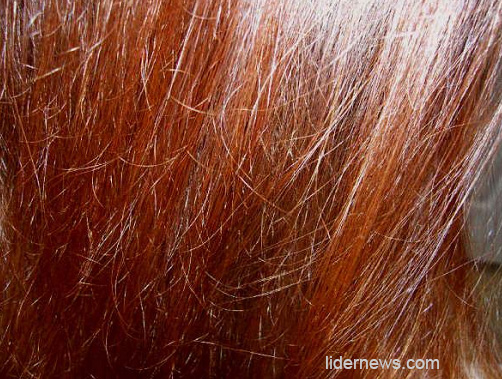 hair dyed with henna after bleaching and dyeing with chemical dyes
hair dyed with henna after bleaching and dyeing with chemical dyes 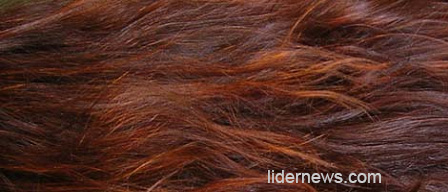


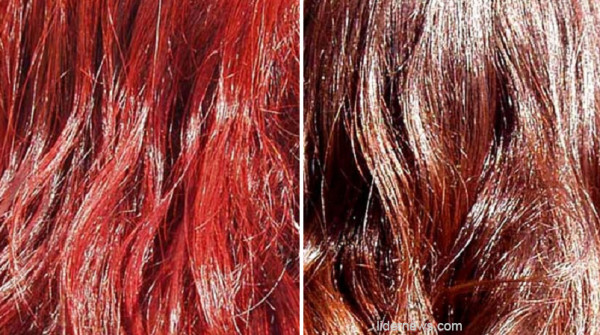
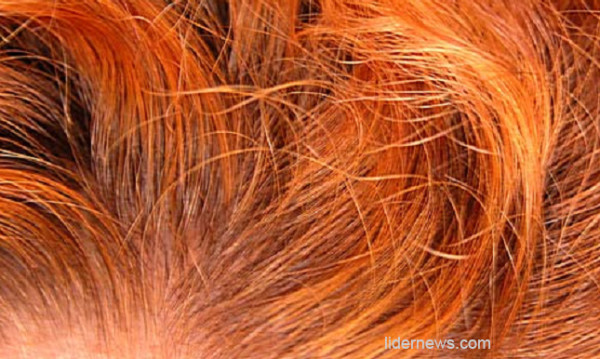
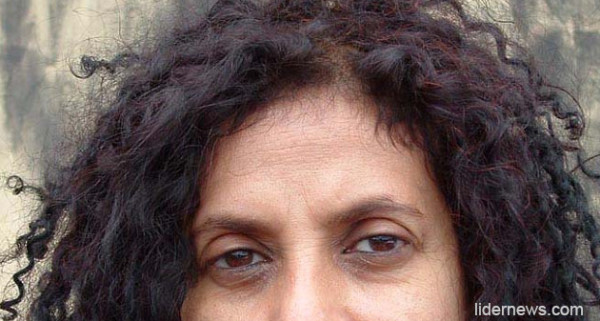
The color you get will depend on the natural color of your hair. Because the red-orange dye molecules are bound to the keratin that surrounds the pigmented core of the hair, causing the color of each strand of hair to be different and each person's hair color will be different.
As you saw in the photos, dyeing your hair with henna makes it smooth and shiny, and also helps restore hair after chemical coloring. You also probably noticed that natural hair color in combination with henna looks much more attractive. But before you start coloring, be sure to check what the color will be after dyeing your hair with henna on a small strand of hair.
Hair dyeing with henna: preparing henna dye
To prepare the paint, henna powder must be mixed with a moderately acidic liquid for two reasons. The cellulose in henna powder must be dissolved to release the red-orange dye. The hydrogen atoms in the red-orange dye molecules must be retained until the dye binds to the keratin in the hair. This will make your hair color darker and more permanent. If hydrogen atoms are not attached to the red-orange dye molecules before the henna is applied to the hair, the color will turn out bright orange and will quickly fade.
Mix henna with lemon juice will be enough to prepare the coloring mixture. Bottled lemon juice will also work and will work just as well as squeezed lemon juice. If your skin is sensitive to lemon and itches after using henna, use orange juice, grapefruit juice, or other less acidic liquids. Vinegar and wine work too, but they stink! Do not use yogurt, its proteins will interfere with the release of the dye and absorb the dye. Slightly acidic herbal tea with lemon works very well. If your liquid is as sour as lemonade, that's enough.
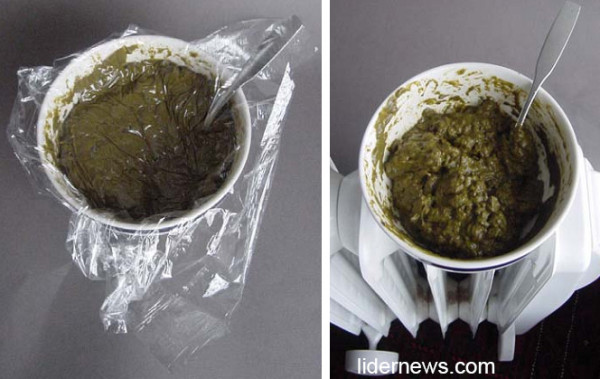 dyeing hair with henna cover the dye with film and place in a warm place
dyeing hair with henna cover the dye with film and place in a warm place We do not advise you to mix henna with coffee. It will change color, but your hair will smell bad and you may get a headache. But if you do add coffee, it will deepen the chestnut tones and add dark brown color.
You can add 2 tablespoons olive oil if you have dry and damaged hair
A little powder carnations may enhance color but may also irritate skin.
If you hate the smell of henna, add a spoonful of dry ginger and cardamom in paint. Your hair will smell nice
Do not dilute henna with boiling water. If you mix henna with boiling water, the resulting hair color will be coppery orange. Mixing henna with lemon juice will gradually darken your hair to a rich, natural dark red color.
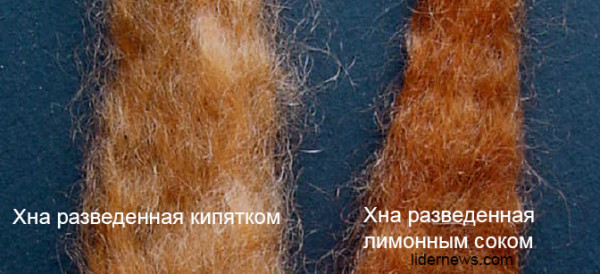
Cover the diluted henna with a plastic bag and leave overnight at room temperature (21 degrees). Overnight, all the dye will be released and you can start coloring your hair. If you are in a hurry, for faster results, place the mixture in a warm place, but not hot. At a temperature of 35 degrees, the mixture will be ready in 2 hours. Before applying hair dye, add a little lemon juice or aromatic tea to get the consistency of yogurt.
Hair dyeing with henna: How much henna powder is needed to dye hair
- For short hair 100 grams
— 200 grams for hair up to the collar area
— 300 grams for shoulder-length hair
— 500 grams for hair up to the waist
1 tablespoon – 7 grams of henna
½ cup (240 grams) - 50 grams of henna
Hair dyeing with henna: What you need to know
1. Henna is a permanent dye that does not wash off or disappear from the hair over time.
2. Hair color darkens over time. If after coloring your hair becomes too bright color, don't worry. They will darken in a few days
3. With each coloring, the hair will absorb more and more coloring pigment. If your hair isn't dark enough, just dye it again.
5. You can even dye hair with henna that has already been dyed with chemical dyes. Before coloring, be sure to do a test on a small ancestor of hair on the back of your head, as the results may be unexpected
6. Also, before coloring, do a test on a small area of skin to avoid allergic reactions. The skin will turn orange, do not be alarmed, this is temporary and is not an allergic reaction
Hair dyeing with henna: how to test before dyeing your hair
1. Take a small section of hair in a place where it won't be noticed and apply a little henna
2. Wrap oiled hair with film and leave for several hours
3. wash and dry your hair
4. Wait 3-4 days, as during this time the hair will darken. If you are satisfied with the result, start dyeing; if not, try other methods of dyeing your hair with natural dyes
Hair dyeing with henna: How to apply henna dye to hair
1. Henna must be applied to clean hair for best results. Wet hair or dry doesn't matter. But it is better to apply the dye to damp hair so that the dye is better absorbed. Be sure to do a test before applying paint.
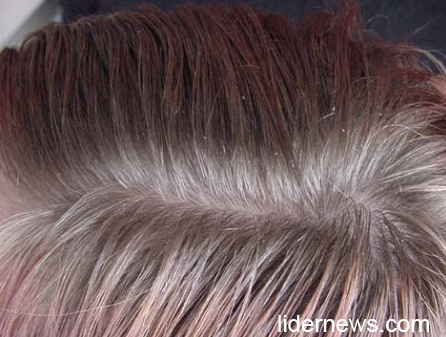
2. Apply cream along the hair growth and on the ears to protect these areas of the skin from staining.
3. Divide your hair into small sections of 2-3 centimeters for better coverage of the hair, so as not to miss anything
4. Wear gloves to protect your hands
5. Using either your hand or a brush, apply henna from the roots to the ends of your hair, working with one small section of hair at a time. Continue until all hair is evenly coated with the color mixture. If you have henna left, distribute it through your hair. After the henna is applied, you will feel a slight heaviness on your head.
 Hair coloring with henna: henna can be applied with a comb or your hands
Hair coloring with henna: henna can be applied with a comb or your hands 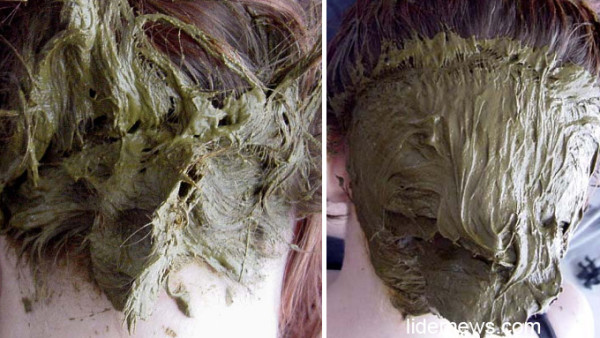
6. Wrap your hair in film
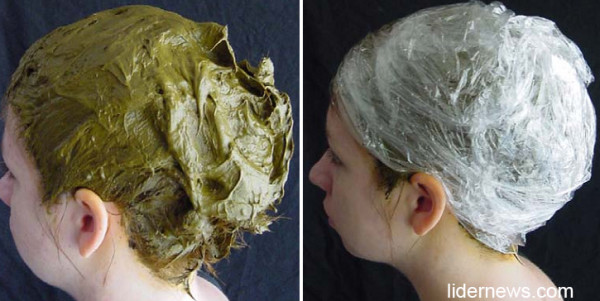
7. Wait. For more light shades keep warm for 35-40 minutes, without heat for 1 hour. Dark shades require a little more time about 45-50 minutes with heat or 80 minutes without heat. If you have long hair then it is best to lie on a pillow to avoid muscle strain
8. Rinse your hair with warm water in the shower. It will take a little longer to wash off henna than to rinse hair after chemical dyes. In order to rinse your hair well, we recommend dividing it into strands again and washing the henna out of them one by one.
9. Wash your hair with shampoo as usual, dry and style

Hair coloring with henna: Questions and answers
Can I use chemical dyes after dyeing my hair with henna?
The short answer is yes, you can use chemical hair dyes after you have already dyed your hair with pure henna. But there is something you should know that chemical dyes will behave differently on non-dyed hair.
Using chemical dyes will not damage the structure of your hair, but will give unexpected results, usually much more dark color than expected. Chemical dyes may also fade faster than usual because henna makes your hair smoother and less porous, so chemical dyes are not absorbed.
Usually, after coloring your hair with henna, you can dye your hair with chemical dyes to a darker color. In order for the dye to adhere better, we recommend that you first lighten your hair and then apply the dye. But it will be very difficult to bleach your hair, since henna does not allow the dye to be deeply absorbed into the hair.
Attention: if you used henna together with basma, then after dyeing with chemical dyes your hair may turn green.
After dyeing your hair with henna, is it possible to return your natural hair color?
No, henna cannot be washed off your hair to restore your natural hair color, but your hair can be lightened
Hair dyeing with henna: How and where to store henna in the house
Henna powder
It is very important to preserve all the properties of henna, store it in a place where there is no moisture, having first wrapped it tightly in a bag.
Henna will retain its coloring powers for several years, and maybe longer if frozen in airtight containers. It can also be stored in the refrigerator or in a relatively cool, dark place at a controlled temperature. Some people store henna at room temperature for more than 1 year without noticeable loss of coloring power.
Storing henna dye mixture:
The henna dye mixture can be stored in the freezer for up to 6 months. Before putting the mixture in the freezer, make sure that the henna has begun to release the dye (your fingers will begin to turn light orange if you hold the dye for 1-2 minutes). Frozen dye will be a little stronger. You can defrost it, then freeze it back several times and it will not lose its coloring power. Freezing sets the dye, so to speak, but either way it is used up at room temperature, its lifespan is shortened, so keep the mixture out of the freezer for the shortest possible time. Acid base mixture (fruit juice or citric acid) increase service life in general, so they help preserve paint during defrosting than liquids with a neutral pH (water, weak tea).









